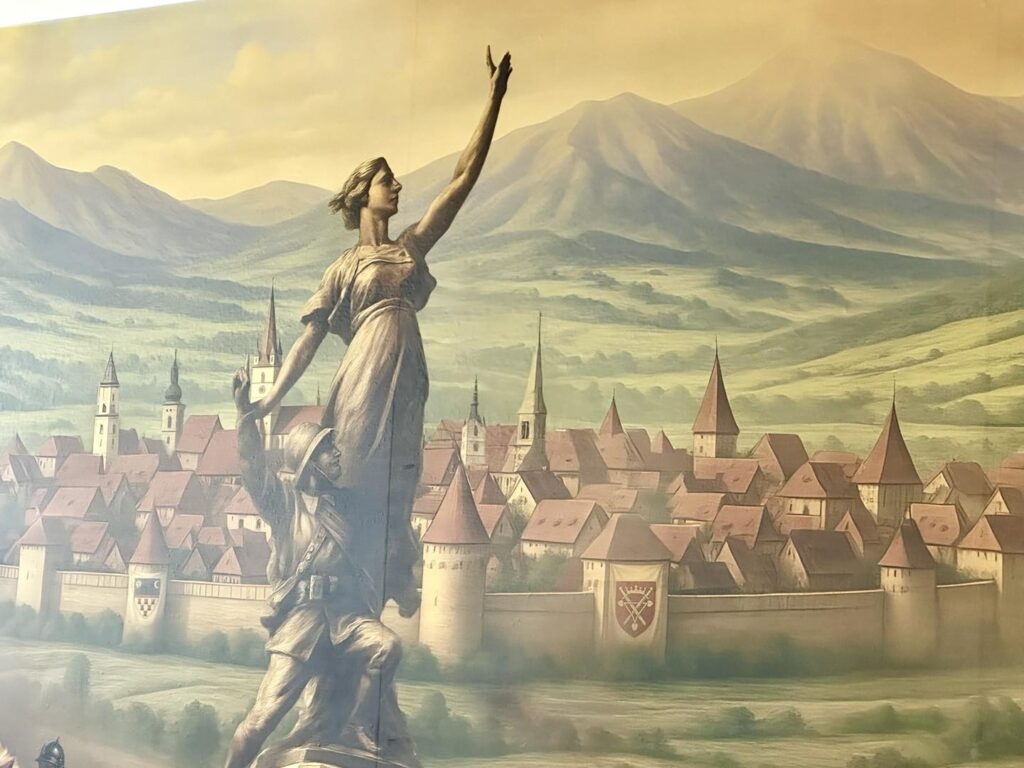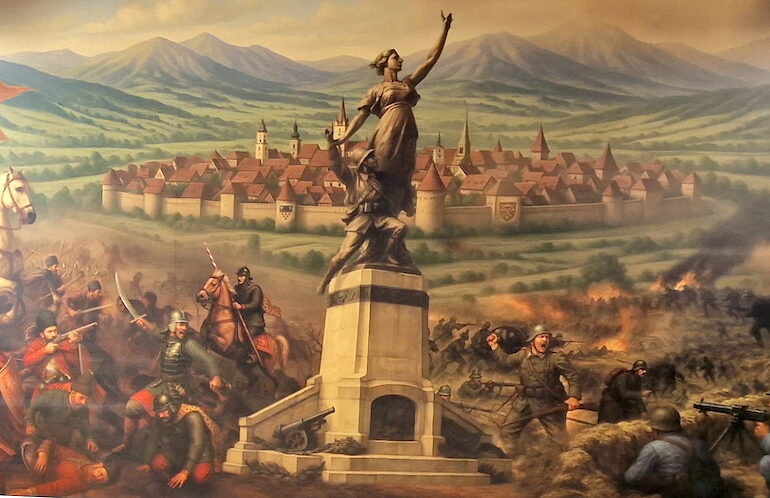A fresco recently unveiled at the inauguration of a hall within the NATO Command Center in Sibiu has sparked a wave of criticism, including from historians presented as consultants of the project.
The mural, symbolically uniting two major moments in Sibiu’s history – the battle of Șelimbăr in 1599, with Michael the Brave leading, and the battle of World War I in 1916, where the Romanian army was defeated by German troops – was generated with artificial intelligence, writes Turnul Sfatului.
Between the two scenes appears the statue of "Winged Victory," represented as "Victorious Motherland," symbolically guiding the heroes towards a modern Romania.
The work combines historical representations, local landscape elements, and nationalist symbols, but without historical accuracy or artistic value, say critics.
Fresco, repudiated by historians
Cosmin Roman, one of the historians presented as consultants of the project, publicly stated that he had not seen the drawing or sketch before the fresco was actually made and recommended the separation of the two illustrated battles.
Furthermore, he condemned the use of artificial intelligence, stating that "a renowned artist would have generated a much better result."
Historian Adrian Alexe, also a project consultant, declared that he did not provide any research and that he "did not agree with such a thing," with his observations being ignored. "I was told they are details," he explained on Facebook.
Radu Oltean: "Ancestors are turning in their graves"
Illustrator and researcher Radu Oltean, known for his rigorous historical works, harshly criticizes the fresco, considering it "something terribly shameful."
He accuses a chaotic composition, glaring errors regarding military equipment, lack of research, and a nationalist glorification devoid of nuances. "It seems like Michael the Brave's men are fighting with soldiers from World War I. The reconstruction of Sibiu is terribly fantastical. The equipment is ridiculous," he said, as quoted by Turnul Sfatului.
Oltean denounces the superficiality of the executors. "For the lazy authors, it was just a quick job. No desire to create a lasting work of art. It's an AI-generated 'manea,' without personality. Ancestors are turning in their graves," Oltean said.
He sees in these types of projects a symptom of "widespread functional illiteracy" and a culture that forsakes excellence. "It's a serious degeneration of our culture. Even the elites settle for crap," the researcher harshly concluded.

Painting full of incorrect historical licenses
Sibiu historian Răzvan Pop highlights serious errors in the composition. "The Sibiu in the image bears no resemblance to the real medieval Sibiu," said Pop. He also points out that Michael the Brave is depicted wearing a turban in battle, whereas he wore helmets in combat. Furthermore, the shields in the image are Saxon.
He also notes the absence of other important battles in the city's history and concludes that the image was altered by the use of artificial intelligence: "Obviously, in the composition, we find some nuances probably produced by the uncertainties of Artificial Intelligence."
G.P.

